By Jenn Gidman
Images by Nick Irwin
Nick Irwin stays spontaneous while on the road with his lineup of Tamron lenses for his Sony mirrorless camera system.
When Nick Irwin was planning a trip at the beginning of last summer, he and his girlfriend mulled over visiting national parks, but the thought of crowds made them reconsider. “I love the Pacific Northwest, and A-frame cabins, so we ended up booking one near Oregon’s Mount Hood, opting to visit some quieter forests, parks, and landscapes in Oregon and neighboring Washington state,” the Michigan photographer says.
Nick packed three Tamron lenses to help him capture the region’s beauty: the Tamron 17-28mm F/2.8 Di III RXD ultra-wide-angle zoom, the 28-75mm F/2.8 Di III VXD G2 standard zoom, and 28-200mm F/2.8-5.6 Di III RXD all-in-one zoom, all for his Sony mirrorless camera system. “These three lenses cover everything I want to photograph on a trip like this,” he says. “The 28-200mm is the perfect travel lens; I use that more than any other lens in my bag. The 17-28mm, meanwhile, helps me capture those ultra-wide perspectives, and I’ve been starting to use it for astrophotography as well. The 28-75mm offers me that F/2.8 aperture throughout the entire range, and the G2 version focuses so fast.”
Although Nick often has photos in mind that he wants to take, he uses his travels as an opportunity to be spontaneous. “The term ‘travel photography’ is brushed with a broad stroke, but every one of my tips tends to have the same theme: Don’t overplan,” he says. “During our Oregon travels, we may have gone to see ‘The Mountain,’ but flexibility allowed for time to also smell the lavender and chase waterfalls—two of several unplanned stops.”
NICK’S QUICK TIPS
• Visit lesser-known areas.
It’s no secret that America’s national parks have been busy the last few years. They’re beautiful, but so are many national monuments and recreation areas, state parks, and even local treasures. Find those picturesque areas and build your trip around that. Fewer people can result in greater enjoyment, and more unique photographs.
How do you find these spots? Small talk can lead to big adventures, and big adventures lead to wonderful experiences and dream shots. In other words, ask the locals. On any given trip, more than 90% of my images come from impromptu destinations, often offered by a park ranger, server, or barista.
• Allow for unplanned stops.
Less of a schedule lets you optimize conditions that are impossible to predict, especially the weather. During the first evening we were there, the wind was still, which made it feel like Trillium Lake was begging for us to see how it could mirror Mount Hood. The next day, when the sun was bright overhead, we hiked to waterfalls in the shaded river valleys below. They were guarded by magnificent tall trees and cliffs, both draped in vibrant green moss. Being flexible leads to more photo opportunities.
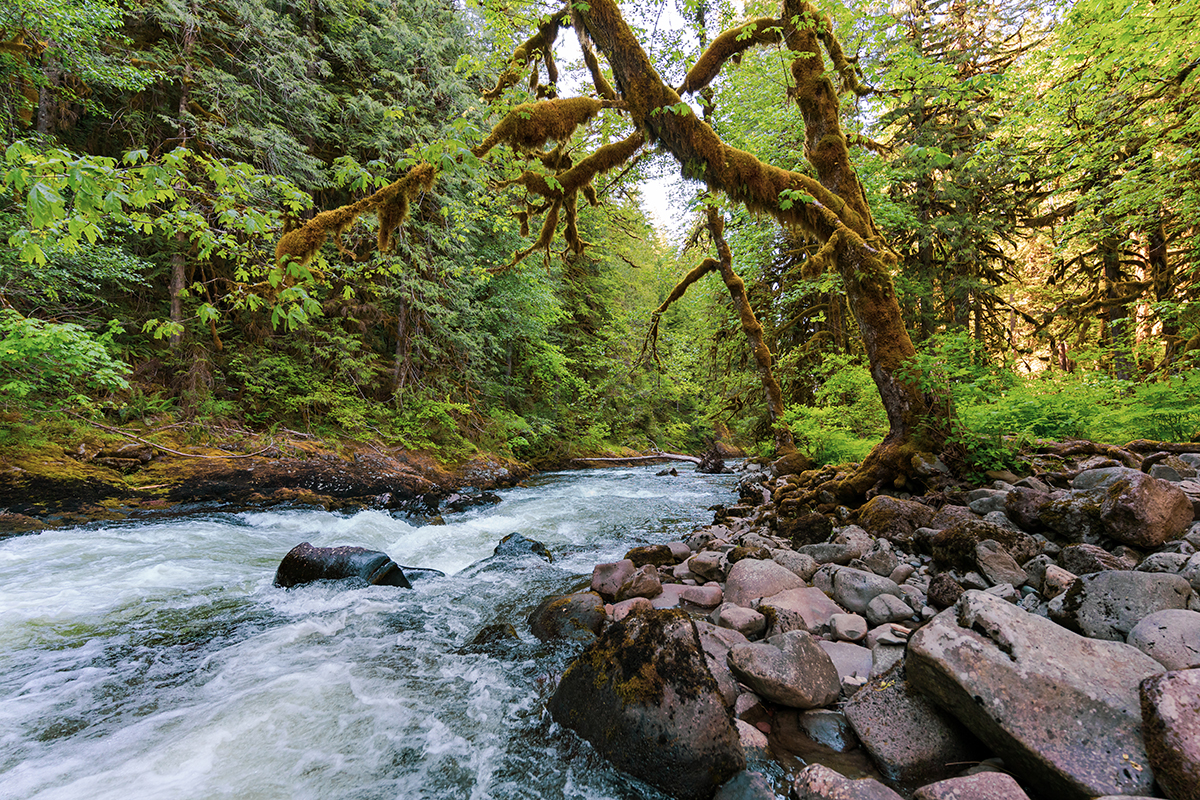
17-28mm (17mm), F/3.2, 1/250 sec., ISO 1000
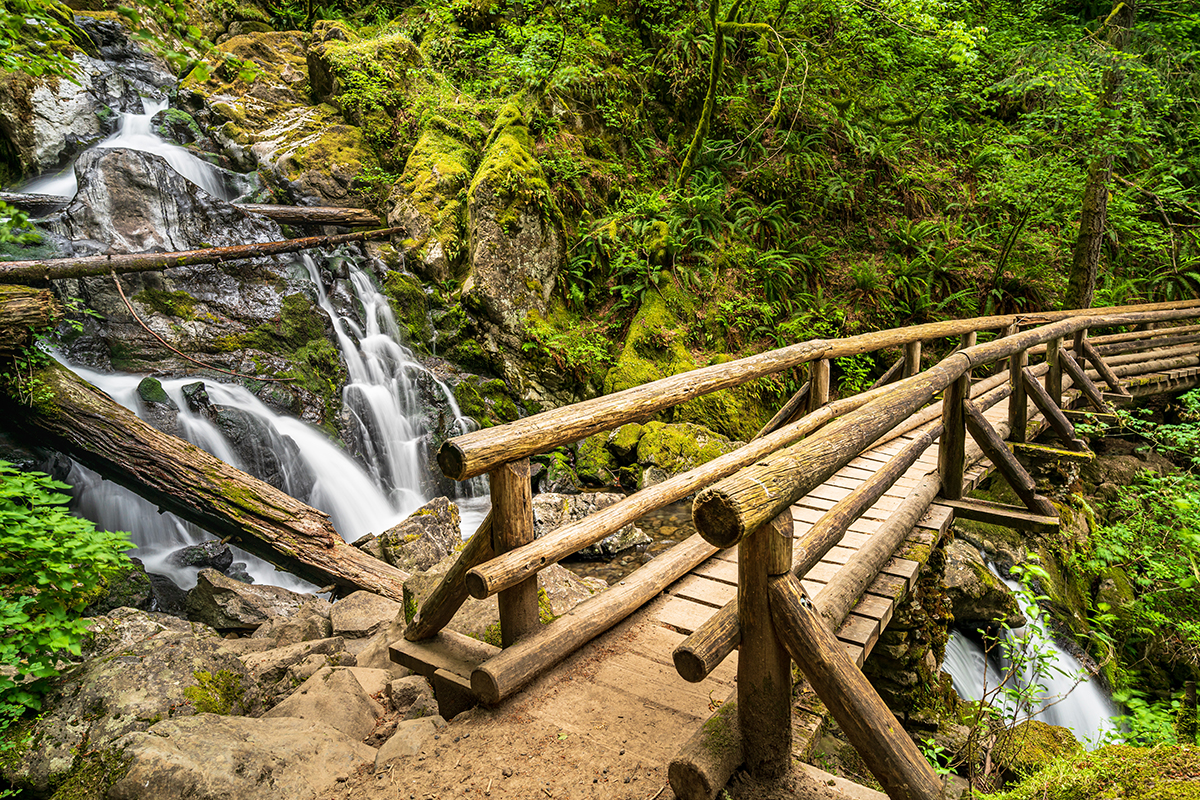
17-28mm (19mm), F/4.5, 1.3 sec., ISO 250
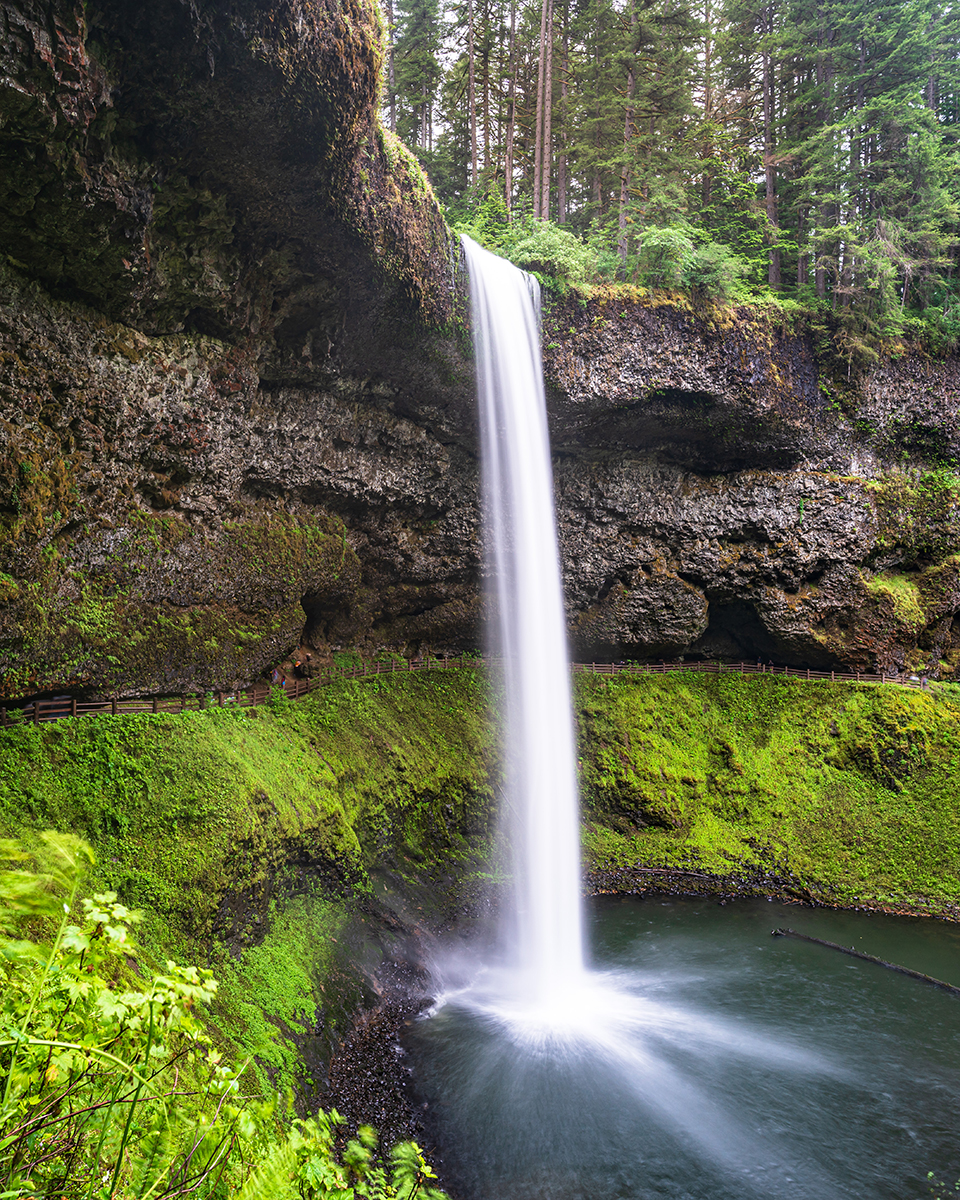
17-28mm (17mm), F/5, 1.3 sec., ISO 125
• Play around with your lenses and focal lengths.
You can be standing in the same spot, gazing at the same subject, and just by changing up your composition through your lenses or focal lengths, you can create dramatically different images. For the two photos you see of Mount Hood, I used the 28-75mm lens for the photo of the boy in the raft, which offers a great sense of scale, then the 28-200 for the one with the rocks in the foreground. I lucked out on the reflections with that second photo—when you have a body of water that size, if you get waves or ripples, you’re not going to capture a shot like this.
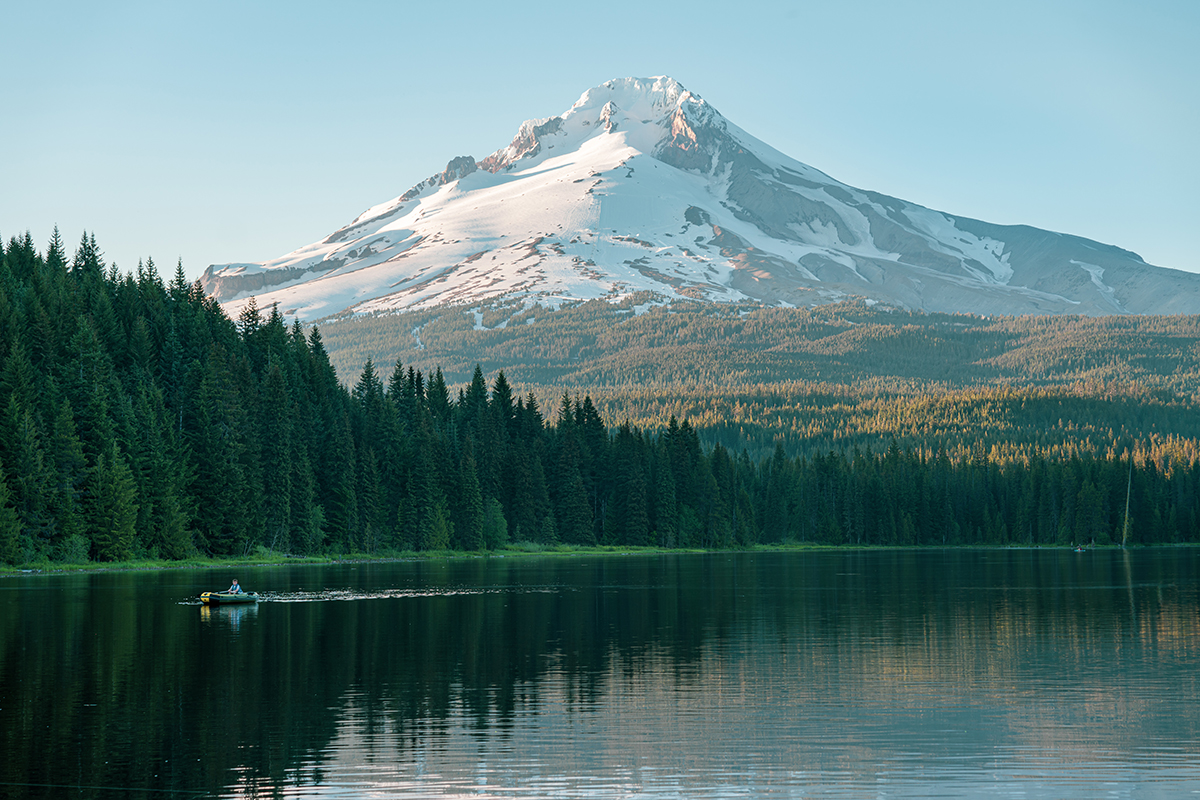
28-75mm (75mm), F/5, 1/100 sec., ISO 100
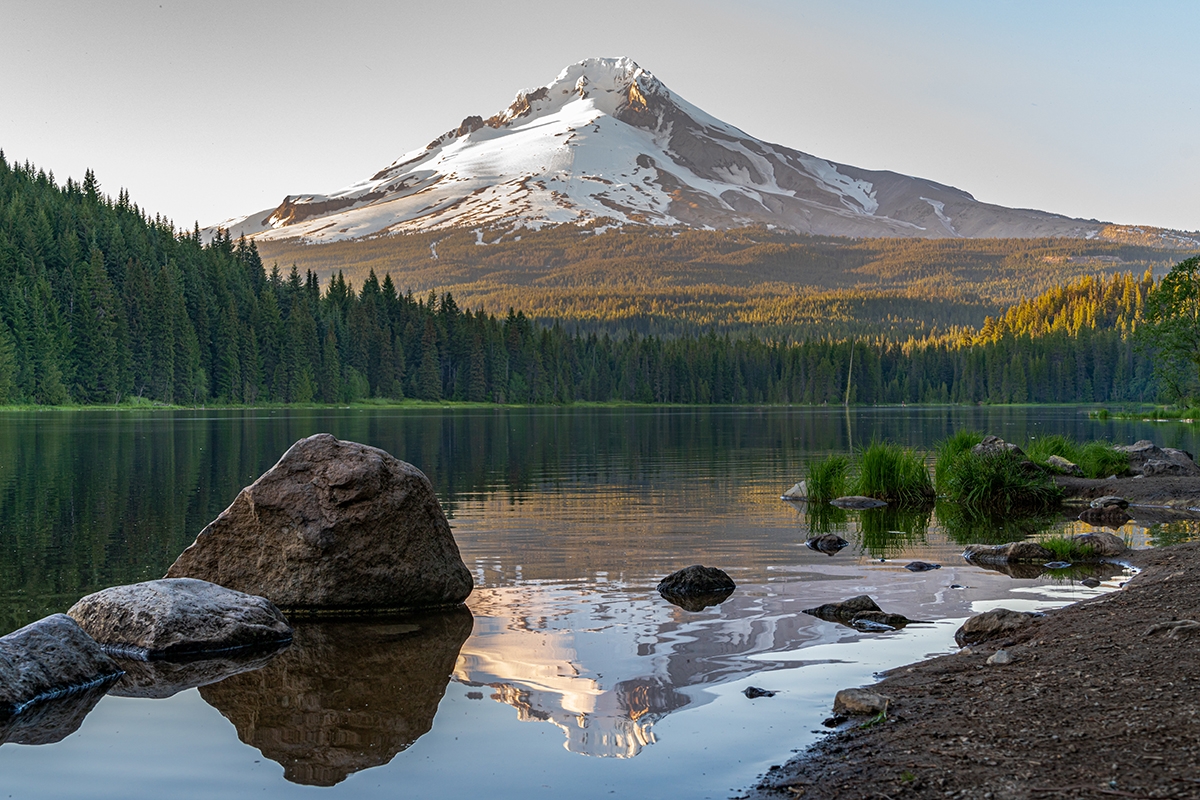
28-200mm (41mm), F/7.1, 1/60 sec., ISO 400
• Don’t be afraid to take photos midday.
Photographers tend to gravitate toward the soft, warm light of golden hour, but when you’re traveling, you don’t always have control of when you’re at a certain location, and you might not know when you’ll get to go back. When we visited the lavender fields, it was around lunchtime, but that bicycle created a quaint scene, and I knew it was then or never.
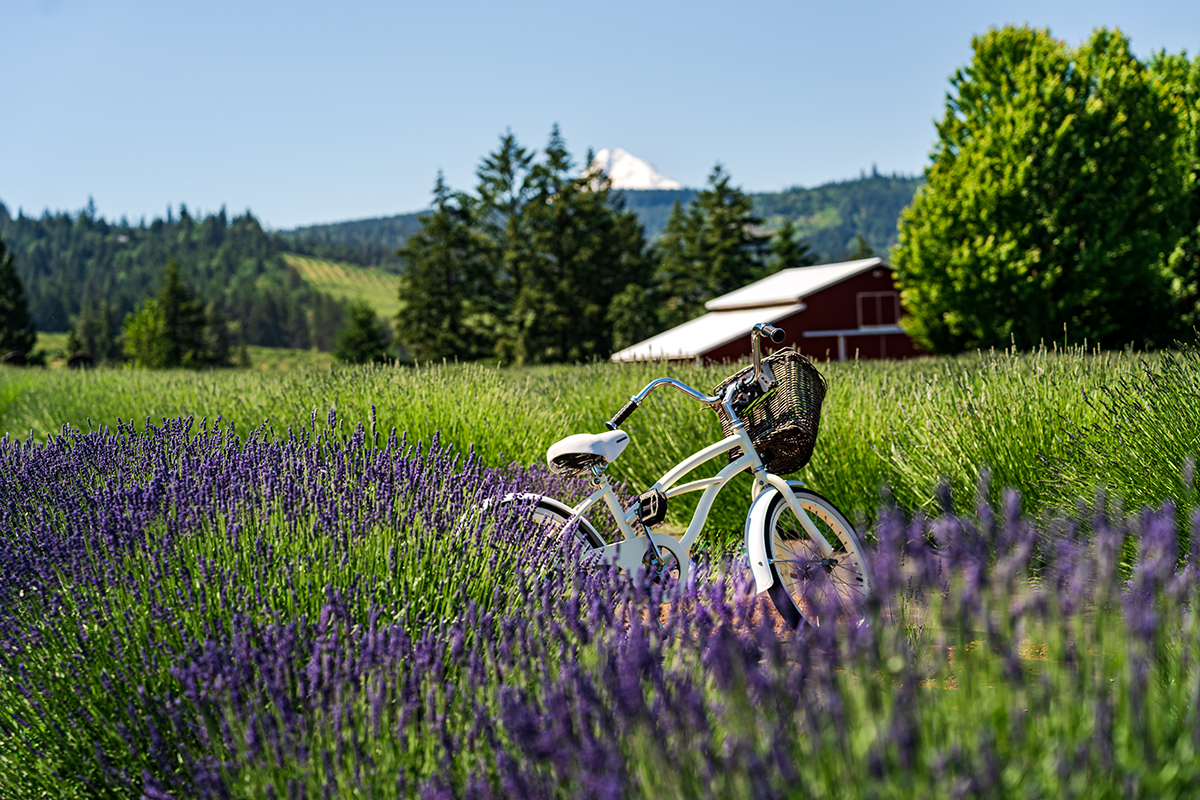
28-75mm (61mm), F/3.5, 1/1250 sec., ISO 100
• Get on the ground.
It can turn a mediocre photo into a much more visually compelling one. Haystack Rock, a 235-foot-tall formation off of Cannon Beach, is one of Oregon’s most famous natural landmarks. It’s hard to adequately capture its size in a photo. Getting low to the ground—I had the camera literally about an inch above the sand—helped me make it look larger than life. I also liked how I was able to use depth-of-field here to make the viewer feel like they’re walking into the image with me. I did have to do a lot of jumping up and running to make sure my camera didn’t get wet, though!
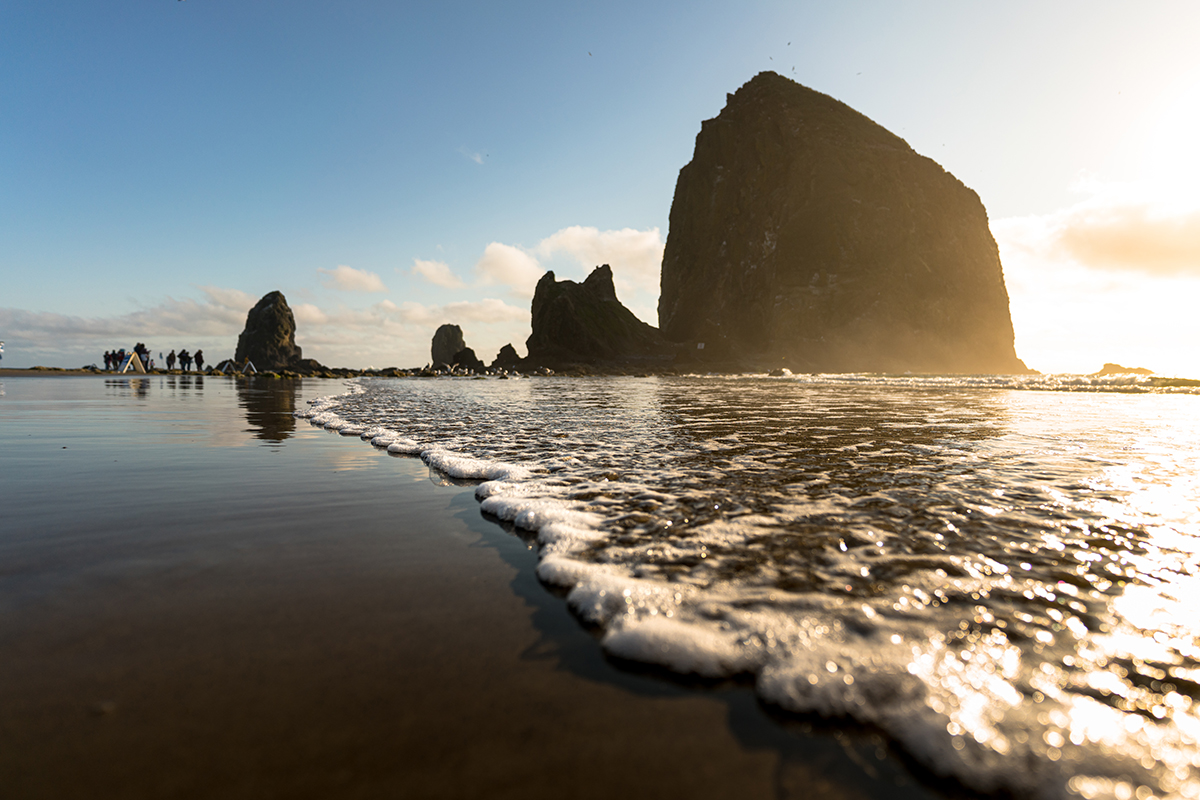
17-28mm (18mm), F/2.8, 1/5000 sec., ISO 250
To see more of Nick Irwin’s work, check out his website and Instagram.